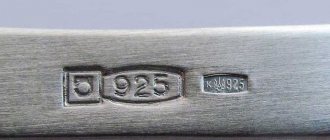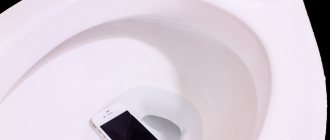Laminate is a high-quality floor covering, but it requires certain installation skills. There are also a number of rules for using this material that should never be violated. Otherwise, any violations can lead to undesirable consequences, the most dangerous of which is swelling of the surface and the formation of bumps on the floor. After such defects appear, you always have to think about what to do if the laminate is swollen from water. It is extremely difficult to eliminate the resulting defects, so it is recommended to consider the possible causes of damage to laminated floors, as well as ways to eliminate them. We will talk about all this in our article.
Main causes of damage
Any action taken in non-compliance with the installation technology, or mistakes made during the process of cleaning the floor surface with a laminated coating, will certainly have negative consequences. The most pressing question is what to do if the laminate flooring is swollen from water. Budget laminate options are especially sensitive to various influences. There are several reasons for the formation of bumps on this type of surface:
- low quality of the components used;
- violation of operating rules;
- lack of necessary tools or violation of installation technology.
First of all, you should pay attention to the quality of the purchased material. While creating a prestigious coating that has a low cost, some manufacturers offer very low quality products. Such samples are subject to absolutely all types of influence, and it is impossible to do without problems during their operation.
Causes of deformation
First of all, you need to determine the cause of the deformation. There may be several reasons and solutions accordingly, let’s consider them:
- exposure to moisture
- the floor was flooded with water. A spilled glass of water will not cause harm, but if contact with the liquid is prolonged, negative consequences may appear - swelling of the canvas and subsequent partial or complete replacement; - low quality material
. Buyers are usually trying to save money, but saving on laminate flooring will result in wasted money on repairs or replacement of the floor. - When installing the floor, no compensation gaps were made.
Their width is 8-12 mm. They are located between the wall and the covering and serve as a buffer zone. When the temperature or humidity of the room changes, the material from which the floor is made has the ability to expand or contract. If there is no gap, the flooring will swell. - The base of the floor was made poorly
. Sometimes the cause of swelling can be the surface of the base under the laminate. As a result, it will be necessary to change the entire coating and substrate. - moldings
_ Another reason for deformation. As in the case of gaps, the moldings will simply prevent the coating from expanding. We must not forget that the coating must be installed in a floating manner, that is, without fastening to the base.
Material quality
Budget varieties of laminate are made from pressed paper with a low content of sealing resins and the thinnest PVC coating. The decorative layer has very thin edges that can be deformed at the slightest stress during installation, thereby exposing joints or forming local swellings of the surface. The penetration of moisture under the protective surface of such a coating leads to swelling of the laminate base. If the laminate is swollen from water, how to correct the formation of voluminous bumps? This can be found out by considering some recommendations.
What is the material made of?
Before you start looking for the reasons why the laminate is swollen, you need to get acquainted with this multilayer material. The number of layers in different products may vary, so as an example it is better to consider the most complex and reliable type of coating.
- The bottom layer is a film, which is both protection, sound and heat insulation. It is an optional element, but, as a rule, it is always present in quality products.
- A protective layer made of thick paper impregnated with resin or paraffin. An alternative to emu is a polymer, such as PVC. This layer is required for any product; it protects the material from moisture and mold and gives the coating strength.
- Chipboard (chipboard). This is the thickest layer, on which the quality of the lamellas depends, since this is where the locking joints are located. The more reliable they are, the longer the coating will last.
- This layer (made of chipboard or fiberboard) can be additionally protected with a moisture-resistant film; it is located on the front side of the lamellas.
- Next comes the decorative coating - colorless paper with a printed pattern and texture. Examples: imitation wood, stone. Sometimes this layer is made of polymers.
The last protective “line” is a film made of melamine-formaldehyde or acrylic resin. The most popular type of laminate has only 4 layers: bottom paper, chipboard (fibreboard), decorative coating and film that protects products from moisture.
It is clear that the weakest link of the lamellas is their locking connections, the less protected part. Their wax impregnation is a big plus for the slats, because such protection guarantees a tighter fit and protects the locks from moisture. It is recommended to clarify this point when purchasing flooring.
Operating rules
Higher quality models of laminated coatings are more expensive; they fit perfectly together and do not allow moisture to pass through at the joints. However, violation of operating rules (especially when it comes to wet cleaning methods) can lead to moisture penetration under the top layer of the material. And the MDF base contains wood fibers that are subject to deformation when in contact with water. Contact of high temperature sources with the laminate surface must be avoided. Particularly sudden heating can also cause the surface to swell.
How to avoid bloating?
Before laying the laminate, it is best to place a specialized film under it; this is more necessary for those who live on the first floor, so that the moisture coming from the basement does not lift the laminate. The joints of the boards should be thoroughly sealed with special glue and sealants so that moisture does not get under the baseboard.
To prevent accidental swelling of the laminate, you should follow basic rules for caring for it:
- If the panel class is 31 or 32, then cleaning is permissible only with a broom or vacuum cleaner (not water-based);
- Class 33 and 34 materials can be cleaned using a combination of dry and wet cleaning.
Basic mistakes
If the laminate is swollen due to water, how to fix the defect? Damage can occur both to individual segments that make up the coating, and to entire zones that include many components. Low quality material deteriorates especially quickly when used in the kitchen or bathroom due to the combined influence of various factors. Particularly dangerous is the swelling of the laminate after water, which makes it unsuitable for further use. Also, the floor may become unusable due to untimely elimination of the causes of damage. Spilled liquids that were not wiped up in a timely manner are especially dangerous for such a surface.
Basic methods for eliminating a defect
At this point, methods will be grouped according to the causes of the defect.
The cause of bloating is liquid that has fallen on the floor.
Water can get on the coating even in a room where, by definition, there cannot be a large amount of water. A broken aquarium, a spilled coffee mug - any of these events can cause swelling on the laminate.
Important! If you do not want to find yourself in such a situation, the laminate must be periodically treated with special waxes or polishes. It will take a little time, but you can protect yourself from bloating due to accidentally spilled liquid. Prevention has never harmed anyone.
Video: What to do if the laminate partially rises
If you see such defects and know why they occurred, you need to solve them quickly. In modern designs, it is possible to replace the panel without disassembling the row - take advantage of this to get the result. It is necessary to remove the panel after the floor has completely dried, because after drying the materials fall into place and the defect disappears. This trick will not work with cheap laminate; it absorbs water very quickly and swells.
If there was a lot of water, lift the board to see if water has accumulated underneath it. Timely elimination of puddles under the board helps to avoid the occurrence of uncontrollable defects. Sometimes this is enough to make the laminate look great. If the problem cannot be solved immediately, the panels will have to be found, removed and replaced with new ones. It is possible to fix a swollen laminate in this way, but it is difficult: if a lot of time has passed since the repair, and this board is in a visible place, you may simply not guess with the shade. Some play up the necessary repairs by alternating panels of different shades - the result is a “spotty” coating.
Coating repair methods
Often, when moisture gets in, only one of the coating elements becomes unusable. If the laminate is swollen at the joints due to water, in this case the supply prepared when purchasing the material can be very useful. If there is no such stock, then you can select a replacement only by comparison, taking a sample of the coating with you to the store. The most difficult part to replace is the area that is in the spotlight. In this case, the color must fully match the damaged sample.
Types of flooring defects
The reasons for their appearance are different, and the consequences can be divided into three types. These include swelling in certain areas (local defects), the appearance of waves and deformation at the joints of the planks.
Local swelling
These are bubbles, their sizes are different. In this case, the reasons are obvious: these are deep scratches into which liquid managed to get. Even a small amount of it has a chance to penetrate into the thickness of the material, which it takes advantage of.
Deformation of planks at joints
Such defects are more typical for wet rooms, which are also washed very often. Regular and strong wetting is the cause of swelling of the edges of the lamellas. Maximum protection of the slats in such rooms is a must. The seams can be treated with either wax or sealant. In order not to encounter deformation at the joints, for “eternally” wet rooms it is better to buy products with high density and very reliable laminated film.
Appearance of coating waviness
The formation of waves can be blamed on the quality of the products or incorrect installation of the coating. This is the absence or insufficient width of the compensation gap. If the room has high humidity, then before installing the laminate it is necessary to let the material rest in a wet room, and it is better to double the acclimatization time. The second option (if there is no time) is to increase the gap: at least 5 mm, but more is better.
The third reason for the appearance of waves is laying long rows without compensation gaps. For example, slats laid from room to room. They will not have enough distances left at the walls, so sooner or later deformation will appear. The permitted length of the laminate without breaks is 10 m, width is 8 m. For rooms with high humidity and temperature changes, these figures are reduced to 8 m and 6 m, respectively.
Replacing segments
If a laminate joint is swollen due to water, what should you do? In practice, it is quite difficult to remove a damaged surface, because this may damage the locks of the product. And this will lead to the formation of cracks, which will not only spoil the appearance of the coating, but also break its tightness, increasing the chance of moisture penetrating the sensitive base. It is important to remember that after the floor has been opened, it is necessary to ensure that there are no remaining moisture that could pose a further danger.
Prevention of laminate swelling
It is quite possible to avoid possible troubles with laminate flooring if you follow some rules for its installation and operation.
First of all, when laying, do not forget about the gaps between the coating and the wall so that the laminate does not swell over time.
When installing such a coating in rooms with high humidity, take care of additional protection of the laminate with water-repellent impregnation.
The most important nuance is that the quality always justifies the money spent. Therefore, do not try to buy cheaper - as a result, you may end up spending significantly more.
Results
Thus, if you want to keep the laminate in its original form for a long time, follow the rules of its operation. And if problems do arise and the laminate begins to deform, following our recommendations, you can restore it to its former beauty.
Weight application
If you try to press a bulge on the floor with a weight, you may encounter other unpleasant consequences. In nine cases out of ten, a section of the swollen surface will simply move to another place. To level the surface, you should resort to a different technique, which largely depends on the cause of the damage.
If problems arise with laminate flooring, the first step is to remove any obstructions that may prevent the laminate from spreading. Next, you should check for the presence of a technological gap along all walls. If the surface of the coating rests against the wall in at least one place, this can also cause the laminate to swell.
It is worth remembering that the required gap should not be less than 5 millimeters. If, after removing all obstacles, the surface does not begin to level, it is necessary to open the areas of swelling. After removing one of the components of the coating, it is worth inspecting the substrate for moisture accumulation. In some cases, it is advisable to replace the substrate in order to understand how to restore the laminate that has swollen from water.
No expansion gap
When laying laminate flooring, it is necessary to maintain expansion gaps around the entire perimeter of the room. That is, the laying of panels does not start directly from the wall, but at a distance from it of at least 8 mm (per the thickness of the panel). This gap provides the necessary space for the expanding panels .
If the room is large, the gap must be increased.
If the laminate is laid tightly from wall to wall, then when it expands there is simply nowhere for it to move. Because of this, the panels are pushed upward and the coating swells. This is first expressed in a uniform protrusion of the surface; when walking, it begins to spring a little underfoot.
If measures are not taken immediately, the coating will push a couple of panels upward, causing a hump to form at the joint between them . The locking parts of these panels will most likely be damaged.
The solution to the issue is not difficult.
The following steps must be taken:
- Remove the baseboard around the entire perimeter of the room.
- Inspect all areas where the laminate meets the walls and assess the degree of laying density. It is necessary to inspect not only the sides of the material, but also the end sides, which also should not rest against the walls.
- The outer rows of panels are dismantled and cut to the required size using a jigsaw (about 1 cm or more, depending on the amount of swelling).
- The edge panels are laid back.
- Skirting boards can be installed immediately, or you can wait a few days to more accurately assess the results of the correction.
Usually, after such a procedure, the coating plane is restored within a few days.
NOTE!
The gap is necessary not only with walls. All heating pipes, appliances and other elements or communications coming out of the floor must have the same clearance.
Using an iron
Let's consider another method. Sometimes you have to resort to unexpected solutions, for example, using an iron to fix laminate floors that are swollen from water. As reviews note, this is a simple but effective way to eliminate defects. However, it is only applicable to high quality material. If the laminate is swollen due to water, how can I fix it with an iron? The second condition that must be met is the absence of water in the substrate. To eliminate swelling of the laminated surface, you need to prepare an iron and a metal ruler.
The iron heating control knob is moved to the middle position. At the site of the formation of the bulge, a metal ruler is applied to the joint of one of the lamellas, which is ironed with a metal iron. After the moisture that has fallen on the base of the laminate evaporates through the joints, the surface of the coating will begin to level out. This will remove the bloating.
Difficulties in replacement
If the laminate swells after water, what should you do? Replacing single coating lamellas is associated with certain difficulties. When disassembling the plane, there is a possibility of chipping adjacent elements. In this regard, all actions should be performed with extreme caution. If the tongue-and-groove parts were connected not with a lock, but with the help of a special glue, then the damaged fragment can only be removed in its entirety. To do this, use a marker to draw a line diagonally across the lamella, along which a cut is then made using a grinder, and the cut strip is removed in parts.
It is necessary to cut the marked component with indentations so as not to damage adjacent elements. To solve such problems, there are several different tools equipped with additional accessories. Thanks to their equipment, specialists can carry out such procedures with the least risk. However, to perform one-time repairs, there is no need to acquire professional equipment.
When repairing laminated flooring at home, suitable available means are used. You can't do without a hammer, chisel, carpenter's knife and screwdriver. Hand tools must be handled with great care. After all, incorrect actions can cause scratches, chips and cracks. To eliminate such visible flaws, you will have to purchase additional tools.
What to do if the laminate is swollen due to water? Before removing the damaged component, it is necessary to separate the entire row in which it is located. Technological gaps left along the walls are convenient for this. After replacing the damaged area, all other elements must be assembled in the same order in which they were before.
The laminate is swollen: how to fix it
Damaged coating cannot always be restored. If the cause is installation errors, then most often you can get by with economical methods of floor restoration:
- If there are no expansion gaps around the perimeter, they can be carefully cut with a jigsaw. A correctly executed seam is completely covered with a plinth.
- If the residual humidity is high, the laminate must be completely removed and laid out in a ventilated, dry room. Apply a waterproofing primer to the base or spread a film and a new underlay and only then reinstall the floor.
Remember that lock joints stretch over time. Therefore, when dismantling, you need to write the number on the back of the slabs with a marker in order to subsequently assemble the coating in the same order.
- If swelling appears due to the incorrectly chosen thickness of the substrate, this means that the locks are already damaged, the strips must be removed and discarded. It is better to buy a few more packs from the same batch along with a new underlying layer. If you don’t find it, select it by shade and glue it.
Advice to “remove the plank from an inconspicuous place, such as under a sofa or closet, and rearrange it” is best ignored. A tight connection will not work in any case, and besides, the coating, as a rule, fades a little in the light, the difference will be obvious.
- The slats that have risen due to water ingress can be left untouched for some time (up to 3 months). Laminate from well-known factories often returns to normal on its own. But if it deteriorates more and more over time, it is more rational to remove the damaged area and replace it with a new one. How this is done is well demonstrated in the video below.
Advice! If you need repairmen for repairs, there is a very convenient service for selecting them. Just send a detailed description of the work that needs to be done in the form below and you will receive offers with prices from private craftsmen, repair teams and companies by email. You can see reviews about each of them and photographs with examples of work. It's FREE and there's no obligation.
Preventive measures
Floor coverings made from laminated boards have several classes, which are designated by numbers from 31 to 34. Materials of the 33rd and 34th classes are of excellent quality and can last for a long time. However, it is worth remembering that cleaning in rooms with such a coating should be done using certain models of household appliances. It should not have the ability to leave scratches, nor create conditions of high humidity on the floor surface. You need to know these points so that you don’t have to think about how to remove swelling of the laminate from water.
When assembling a laminated coating, it is recommended to use special sealants designed for processing joints. Particular attention should be paid to transverse seams because they have the greatest ability to allow moisture to pass through. If, as a result of careless actions, water is spilled on the surface of the laminate, it should be immediately wiped off and the surface dried. If this condition is met, you can avoid unpleasant consequences and not have to think about what to do if the laminate is swollen from water.
How to repair swollen laminate flooring without disassembling
If the coating has stood in a humid environment for several days, then it is almost impossible to solve the problem without replacing the lamellas. It happens that even a thoroughly wet laminate can be dried in a separate room if four conditions are met:
- There is no furniture in the room;
- There are no drafts in the room, and existing heating devices can be adjusted or turned off;
- A cloth made of pressed pine needles is used as a substrate;
- The covering is laid on wooden floors, under which there are full ventilation.
If the laminate is not swollen, then you can try to dry the coating through the vents in the floor. To do this, remove the baseboards and use a fan to blow air at room temperature into the underground space through the windows. No heaters or irons.
First of all, remove the remaining water
Important! The simplest method of drying, in addition to removing moisture, allows you to get rid of the musty smell and at the same time eliminate the conditions for the formation of mold.
Many experts believe that drying joists and floor beams should be done in any case, even if the laminate flooring is swollen and unusable. In other cases, for example, when laying on concrete or OSB, it will be possible to restore the swollen laminate from water only with a small area of soaking.
What to do if the laminate is swollen from water
The design of the floor covering is such that the layer of lamellas, when laid correctly, is free on the floor. Thanks to this, the difference in humidity and temperature of the material does not affect the floor surface in any way. If the laminate gets wet and swollen, this means that some of the fibers remain wet, while some have already dried or remained untouched by moisture.
An example of swelling of a cheap laminate
If the coating is already swollen, then the lamellas can be preserved only if the material is properly dried:
- First of all, remove as much furniture from the room as possible;
- Remove the baseboards;
- At a distance of 10-20 cm from the wall, cut the lock along the joint line with a sharp knife and lift the edge of the lamella or remove it completely to ensure drying of the substrate.
You shouldn’t worry too much about the removed panels; this is the only possible way to remove any remaining water under the coating. In addition, if you remove a couple of strips along the walls, this will help partially level and settle the joints where they are swollen.
Separately, it is necessary to discuss how to properly remove water and restore the laminate after swelling. Firstly, it is undesirable to heat the room; this will not help remove moisture, but will only worsen the situation. If somewhere the material has not yet swelled, it will definitely rise, and in addition, with moisture and high temperatures, the laminate easily bends with an arc. It is important not only to dry the floor, you need to maintain the geometry of the panels and prevent them from delaminating and deforming.
Some of the slats will need to be removed
Secondly, if the laminate is already swollen, then you need to dry the room with a slight draft. For example, you can install a fan with a capacity of 150-200 m3/h, this will be enough to get rid of water in two days. For example, the floor-standing version of a household fan has 2-3 times higher performance. It can also be used, but at very low speeds, and you need to place it at the maximum distance from the areas where the floor is swollen the most. After 10-15 hours of drying, you should try to level the swollen laminate. To do this, the raised areas are loaded with pressure. A load of 10-15 kg/m2 will be required. Everything is used, from books to sports equipment, the main thing is that the pressure on the points where the floor is swollen is uniform.
What to do if the laminate is swollen at the joints
The end lock that connects the two panels remains the most vulnerable point. If the front and supporting surface of a laminate board is covered with polyurethane and vinyl film, then the end with a groove or tenon is unprotected from water and absorbs most of the spilled moisture. Water penetrates a few millimeters inside, but this is quite enough for the elements of the lock to swell and deform under the bursting pressure. If during the drying process you do not load the areas of the laminate that are swollen, then the surface will remain wavy due to deformed locks.
There are models of laminate locks, the design of which includes silicone inserts that seal the temperature gap and protect the joint from water leakage. The system is relatively new, expensive, but has already proven its effectiveness for kitchen and bathroom conditions.
It is important to gain access to the inner surface of the locks
Elimination of swelling of the laminate at the joints begins with opening the lock. Using a non-sharp object, you need to separate the tenon and groove in order to gain maximum access to the end surface. The line along which the laminate layer is swollen is dried with a hair dryer with the heating element turned off. Experts recommend that areas where the laminate is swollen should be corrected without disassembling with an iron only as a last resort. For example, material delamination occurred. In this case, the lock and cracks at the end are treated with PVA water emulsion and dried with an iron through a heat-resistant cloth.
There are many exotic, but effective recipes in their own way. For example, moisture from a lock in a place where the floor has swollen can be easily removed using calcined table salt. Fine purified salt is calcined in a metal container on a gas burner, allowed to cool slightly and poured onto a fabric backing along the joint. It turns out to be troublesome, but effective. To completely eliminate swelling of the laminate at the joints, the procedure will need to be repeated several times in combination with the use of oppression.
Purchasing recommendations
In most cases, laminated floor coverings are fancy materials that require special care and treatment. However, the resulting surface looks so attractive that buyers often turn a blind eye to the shortcomings. Still, it should be noted that, along with the others, there are samples that can be resistant to water and mechanical damage. So, if you wish, you can always choose an option that is suitable for any room category, and can also satisfy the requirements of each consumer. You can get an attractive-looking floor surface without paying a high price.
But you should be prepared for the fact that it is worth hiring specialists with work experience and the necessary technical base to assemble such structures. In addition, the further operation process will be associated with many conventions that will need to be strictly observed.
Why does laminate swell due to errors during installation?
From the school physics course we know that when heated, objects expand, and when cooled, they contract. Indicators of relative air humidity were also studied there, and it was already mentioned that the wood base of the lamellas swells from moisture.
Laminate flooring is also called floating: it is not attached to the base; gaps are left near the walls, allowing movement. These movements are so insignificant that they are not noticed in everyday life; the gaps near the walls are covered by the baseboards, so it seems that nothing happens to the floor. However, if the gaps are too small or not at all, the movement of the floor will quickly become obvious: the slats will begin to bow. By ensuring technological gaps, the problem can be easily eliminated.
There is another installation error, not quite swelling. With it, not convexities are formed, but concavities of the surface - the substrate is too thick and soft. Before laying laminate flooring, it is necessary to level the base. Sometimes builders or inexperienced owners making repairs on their own decide to use a trick and level the base, increasing the layer of substrate. The slats are not thick or strong enough to support a person's weight. The soft substrate allows them to sag and dents form. There is only one way to eliminate such a defect: removing the laminated coating, high-quality preparation of the base, and laying the correct substrate.











